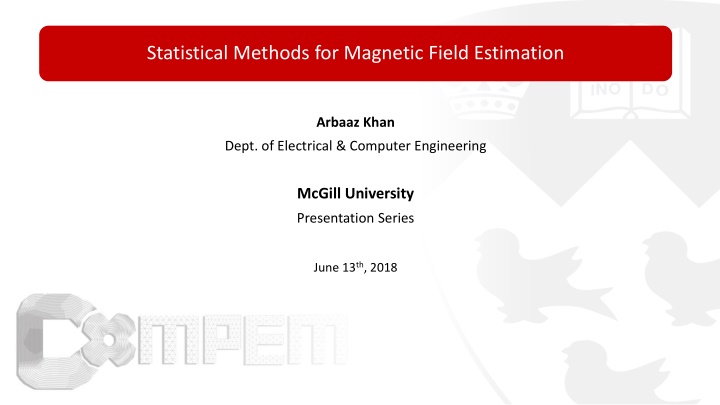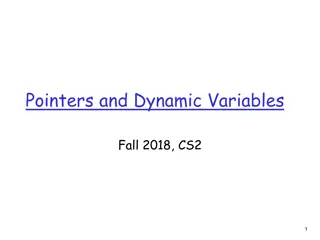
Methods for Magnetic Field Estimation in Electromagnetic Analysis
Uncover the advancements in machine learning, deep networks, and recurrent neural nets for electromagnetic analysis presented by Arbaaz Khan from McGill University. Discover how statistical methods are utilized for accurate field solutions in electromagnetic devices such as transformers and actuators. Explore the intersections of deep learning and electrical machines for efficient design and analysis. Visit the presentation series for more information.
Download Presentation

Please find below an Image/Link to download the presentation.
The content on the website is provided AS IS for your information and personal use only. It may not be sold, licensed, or shared on other websites without obtaining consent from the author. If you encounter any issues during the download, it is possible that the publisher has removed the file from their server.
You are allowed to download the files provided on this website for personal or commercial use, subject to the condition that they are used lawfully. All files are the property of their respective owners.
The content on the website is provided AS IS for your information and personal use only. It may not be sold, licensed, or shared on other websites without obtaining consent from the author.
E N D
Presentation Transcript
Statistical Methods for Magnetic Field Estimation Arbaaz Khan Dept. of Electrical & Computer Engineering McGill University Presentation Series June 13th, 2018
Introduction Deep Networks Results Recurrent Neural Nets Expansion Questions Outline Introduction Advancements in Machine Learning Types of Deep Learning Deep Networks Artificial Neural Networks Convolutional Neural Networks Results ConvNets / CNNs Recurrent Neural Nets Issues with CNN RNN working Expansion Machine Design June 13th, 2018 2 / 5 Arbaaz Khan Deep Learning for Electromagnetic Analysis
Introduction Deep Networks Results Recurrent Neural Nets Expansion Questions Advancements in Machine Learning - Recent Trends Although Deep Learning has gained a lot of importance in recent times, it has been in existence since 1940. Some factors that are directly responsible for the growth in past few years are: Computation Power (GPUs, ASICs, TPU). Data. Improvement in algorithms (CNN , LSTM). Infrastructure & Frameworks (Git, Cloud Computing, Tensorflow). Why not use these models for design & analysis of Electrical machines? A computationally cheap & accurate field solution is necessary for analysis of electromagnetic devices such as actuators, transformers, and electric machines. June 13th, 2018 3 / 5 Arbaaz Khan Deep Learning for Electromagnetic Analysis
Introduction Deep Networks Results Recurrent Neural Nets Expansion Questions ANN - Introduction Neural Networks are modeled as collections of neurons that are connected in an acyclic graph. Figure: A feed-forward neural network A loss function (dependent on training data and weights) measures the quality of a particular set of parameters based on how well the induced scores agreed with the ground truth target in the training data. June 13th, 2018 4 / 5 Arbaaz Khan Deep Learning for Electromagnetic Analysis
Statistical Methods for Magnetic Field Estimation Thank you! Questions or Comments? McGill University Presentation Series Visit our website: http://www.compem.ece.mcgill.ca Email address: arbaaz.khan@mail.mcgill.ca

















